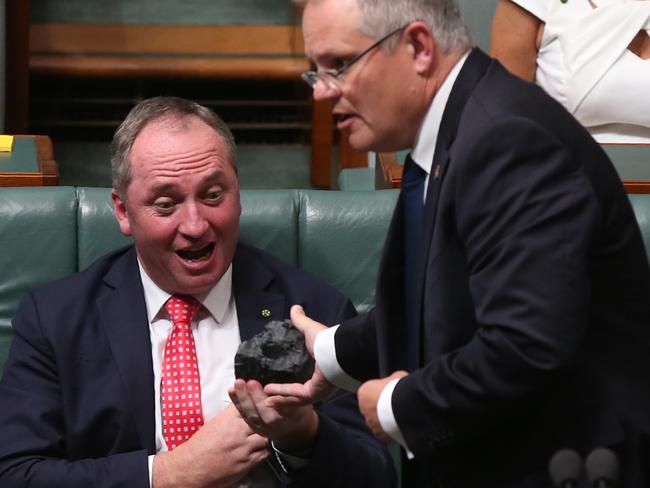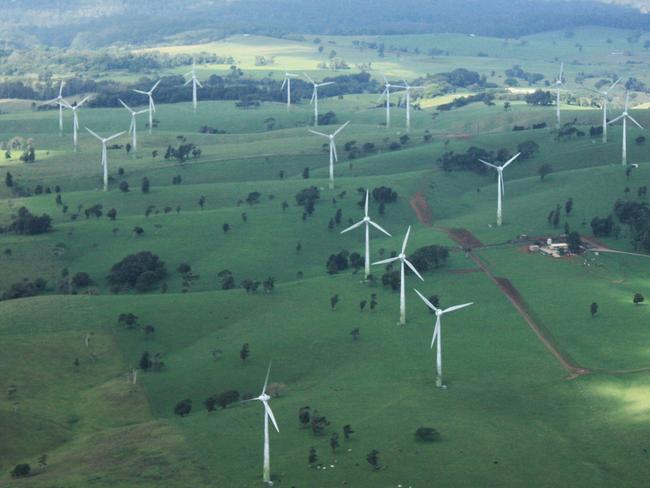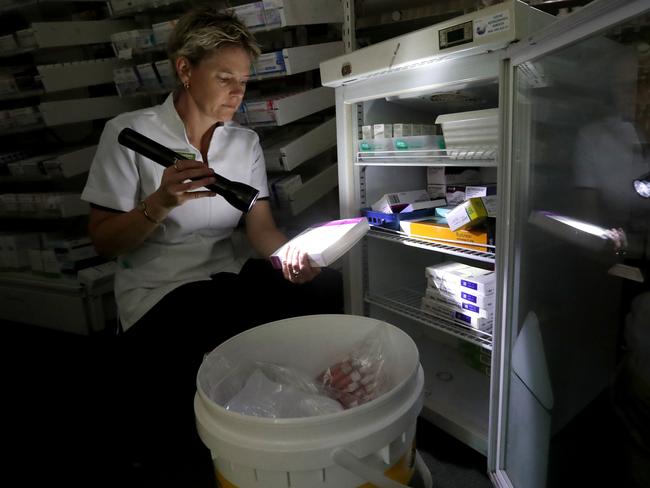Why South Australia’s blackouts are a problem for us all
BLACKOUTS could soon become more common in areas other than South Australia, with a warning being issued to NSW residents as well.

BLACKOUTS could soon become more common in areas other than South Australia, with a warning being issued to NSW residents as well.
The Australian Energy Market Operator has already issued a notice warning of tightening supply/demand in NSW over the coming days, and this could see load shedding happen there as well, with temperatures expected to rise to 40 degrees over the next few days.
Load shedding, which causes rolling blackouts, has been blamed for South Australia’s latest power outage and SA Energy Minister Tom Koutsantonis said today the problem would probably not be limited to South Australia.
“The problem that is occurring here is coming to a city near you on the eastern sea board soon,” he warned.
“There is a problem of generation and the way the market operates in this country,” Mr Koutsantonis said.
“That is, we have an oversupply of generation, yet the market is unable to dispatch that electricity to sufficiently meet our needs,” he said.
“That is a massive catastrophic failure of the national electricity market.”
But the coalition is using South Australia’s power woes to sharpen the attack on Labor’s renewable energy policy.
“Labor incompetence has subjected the people of South Australia to Third World conditions,” Prime Minister Malcolm Turnbull said in Parliament today.
Mr Turnbull has previously talked up the role of clean coal in Australia’s energy future and Treasurer Scott Morrison even wielded a lump of coal during Question Time today, gleefully declaring: “this is coal — don’t be afraid, don't be scared”.
The treasurer said it was coal that had ensured Australia had enjoyed an energy competitive advantage for more than 100 years, delivering prosperity to businesses and ensuring industry had been able to remain competitive in a global market.
The Federal Government slammed South Australia and other states for setting ambitious renewable energy targets before the electricity grid is ready to cope.
Mr Turnbull has dismissed Labor’s aim to lift the Renewable Energy Target to 50 per cent by 2030 as “a mindless rush into renewables”.
South Australia’s electricity grid, which relies on renewables for 40 per cent of its power, has been called a “basket case” after yet another blackout on Wednesday night. With many other states introducing ambitious renewable energy targets, there are warnings the same problems could soon spread to the rest of Australia.
Residents have been furious over the blackout due to “load shedding”, which plunged 90,000 properties into darkness on Wednesday night, at the end of a 42C day.

“South Australia has been a basket case when it comes to energy policy and we’ve made the point that (Premier) Jay Weatherill’s big experiment has failed,” Federal Energy Minister Josh Frydenberg told Sky News.
“Last September 1.7 million households lost power. Then you had another outage in December. You’ve had another one in January and another in February and it’s just not good enough.”
South Australia has been under pressure in the past few months over a number of blackouts, including one in September that saw the entire state blacked out.
One blackout in December saw the electricity distributor make compensation payments of more than $20 million to about 75,000 customers.
Scott Morrison Pulled Out A Big Lump Of Coal And Waved It Around In Parliament Then His Colleagues Passed It Around Like A Football #qt pic.twitter.com/tPkPIFGwPp
— Josh Butler (@JoshButler) February 9, 2017
Some have pointed to state’s reliance on renewables for 40 per cent of its power but so far reports into why the blackouts happened suggest there could be a problem with how the system is adapting to the way renewables function, compared to fossil fuel sources.
A third report into the causes of the statewide blackout found a protection feature built-in to some wind farms, which the Australian Energy Market Operator was not aware of, caused some of them to reduce their output after a certain number of voltage dips.
This behaviour was unexpected and therefore not planned for in the way the system functioned.
Last night’s failure is being blamed on the use of load-shedding to protect South Australia from another statewide blackout.
Load shedding, when electricity is shut down in some areas when there isn’t enough power to meet demand, could become more common as more coal-fired power stations close down, and climate change causes more extreme weather events.

THE PROBLEM OF CONNECTING RENEWABLES
One of the big criticisms of renewables is that they provide “intermittent energy” because they only generate electricity when the sun is shining, or the wind is blowing, for example.
Intermittent energy is a problem for an electricity network because it likes “synchronous supply” where supply and demand is kept at a perfect level.
If wind power drops off, the network needs to get extra electricity from somewhere else to meet supply. In SA’s case this would normally come from its gas-fired power plants, solar or the interconnectors that provide extra electricity from Victoria.
The statewide blackout on September 28 happened because the interconnector wasn’t designed to provide that much extra electricity, causing it to overload and the system to shut down.
Mr Weatherill has already flagged that he wants to build another interconnector to NSW, which would give SA another source of electricity.
Connecting different states looks likely to become more important to maintain supply of electricity, as they introduce more renewables and move away from coal-fired power.
When it was announced in November that the Hazelwood power station in Victoria would close, Mr Frydenberg told Lateline that it would mean the state would have to import more electricity from NSW and Tasmania.
This would also likely drive up electricity prices in Victoria and neighbouring states.

NEED FOR CHANGE
Prime Minister Malcolm Turnbull has blamed South Australia’s leadership for its ideological drive towards renewables without proper planning or putting in place back-up power or storage.
He said South Australia had a history of heatwaves, and there often was no wind at these times.
“When there’s no wind, all their windmills are not generating electricity and they haven’t planned for that,” Mr Turnbull said.
“This is not an issue about the virtues of fossil fuels, one type or another, or wind energy or renewable energy, this is an issue about competence.”
“The Labor party, driven by ideology is putting Australian households and businesses at risk,” he said.
He said the Labor party in Western Australian was now calling for a 50 per cent renewables target, putting people’s livelihoods at risk.
But Mr Weatherill hit back at the criticisms saying the Pelican Point gas-powered generation plant in SA was not asked to come online even though it could have been.
“It could have been asked to turn on, it wasn’t. To think there was sufficient thermal capacity in the system and it wasn’t used is angering to me,” he said.
Mr Weatherill believes there is a problem with how the national energy market is working and has flagged the state government was planning to intervene in the market.
“They (Federal Government) are seeking to abdicate responsibility to SA, so we have to step up and take responsibility,” he said.
Some of the measures would be dramatic, including one option to completely nationalise the system, he added.
SYSTEM BEING RUN LIKE THE ‘STOCK MARKET’
SA Treasurer Tom Koutsantonis said the market was being run by economists who make decisions based on price and the system doesn’t necessarily operate in a way that prioritises reliability of power.
“That is why last night, they made a decision that it was easier and cheaper to load shed than it is to turn on generation. That is unacceptable,” he said.
“The Premier and I won’t accept that any more.”
He said the AEMO, which operates most of Australia’s gas and electricity markets, was running the electricity system “like it is a stock market” and also noted that there were no engineers sitting on the corporation’s board.
AEMO released a statement this morning confirming it had directed the use of load shedding in South Australia at 7.03pm AEDT, to maintain the security of the power system over the evening peak demand period.
Certain critical infrastructure is exempted from load shedding including hospitals, prisons and large meeting places.
Mr Weatherill said the areas chosen to have their power switched off depending on a randomly-generated list.
“Last time we load shed was in 2009 and we went through the list last night and where that list completed is where it will start again,” the Premier said.
AEMO said it had requested more electricity from other states but did not receive “sufficient bids” to maintain the supply/demand balance in South Australia.

It asked ElectraNet to load shed 100MW, which made up about 3 per cent of the total South Australian demand.
This meant some areas of the state lost power until the electricity was restored about 7.40pm AEDT.
In a statement it said: “AEMO understands the frustration from South Australian energy consumers as electricity is an essential service.
CAN RENEWABLES STACK UP?
While the PM has been spruiking clean coal’s future, others have said it doesn’t exist and a plant would also be very expensive to build.
Experts have also suggested it’s possible to create a stable system through things like pumped hydro or the construction of solar thermal power systems.
What’s clear is that the future role of renewables in Australia will likely rest on the national electricity system adapting to the way it functions — sooner rather than later.
— with AAP



